Introduction
Have you ever considered how the small choices you make daily, like what kind of plates you use, can significantly impact our planet? Switching to palm leaf plates at home is a simple yet effective way to contribute to a healthier environment. Let’s delve into this eco-friendly alternative and explore its surprising benefits.
What are Palm Leaf Plates?
Palm leaf plates are a type of eco-friendly tableware made from the fallen leaves of the Areca palm tree. These leaves are collected, cleaned, and then molded into various shapes and sizes to create plates, bowls, and other types of serving dishes. The process of making palm leaf plates is entirely natural and does not involve any chemicals or synthetic additives.
Here are some key characteristics of palm leaf plates:
- Eco-Friendly and Biodegradable: One of the primary advantages of palm leaf plates is their eco-friendly nature. Being made from naturally fallen leaves, they are completely biodegradable and compostable. This means they break down into natural elements in a compost environment, leaving no toxicity in the soil.
- Sustainable Manufacturing: The manufacturing process of palm leaf plates is sustainable. It involves the collection of fallen leaves, which means no trees are cut down to produce them. This practice contributes to the reduction of deforestation and promotes environmental sustainability.
- Durable and Lightweight: Despite being made from leaves, these plates are surprisingly sturdy and can handle a variety of foods, including hot and liquid items. They are also lightweight, making them easy to transport and use for outdoor events or catering services.
- Chemical-Free: Unlike some plastic or Styrofoam products, palm leaf plates are free from chemicals and toxins. This makes them a safer option for serving food, particularly when compared to other disposable tableware that may leach harmful substances.
- Unique Aesthetic Appeal: Each palm leaf plate has a unique texture and pattern, giving them a rustic and natural look. This can add an aesthetic value to the dining experience, especially for events or restaurants aiming for a natural or organic ambiance.
- Versatility: Palm leaf plates can be used for a wide range of occasions, from casual home use to formal events. They are suitable for all types of food and can be a conversation starter due to their unique and eco-friendly nature.
- Easy Disposal: After use, palm leaf plates can be composted or disposed of without causing environmental harm. This ease of disposal is a significant advantage over traditional plastic or paper plates, which can take hundreds of years to decompose.
In summary, palm leaf plates are a sustainable, eco-friendly, and practical alternative to traditional disposable tableware. They offer a combination of environmental benefits, practicality, and a unique aesthetic appeal, making them a popular choice for those looking to reduce their environmental footprint while enjoying a unique dining experience.
Environmental Benefits
The environmental benefits of palm leaf plates are significant, contributing positively to sustainable practices and reducing the ecological footprint associated with disposable tableware. Here are some key environmental advantages of using palm leaf plates:
- Biodegradability and Compostability: One of the most significant environmental benefits of palm leaf plates is their biodegradability. Unlike plastic or Styrofoam plates, which can take hundreds of years to decompose, palm leaf plates break down naturally within a few months when composted. This means they return to the earth without leaving harmful residues, reducing landfill waste and pollution.
- Sustainable Resource Use: Palm leaf plates are made from the fallen leaves of the Areca palm tree, which means their production does not require the felling of trees. This sustainable use of natural resources helps in preserving forests and reducing deforestation, contributing to the overall health of ecosystems.
- Reduction in Carbon Footprint: The production and disposal of conventional plastic and paper tableware contribute significantly to carbon emissions. In contrast, the carbon footprint of palm leaf plates is much lower. The process of collecting, cleaning, and pressing the leaves into plates requires minimal energy compared to the manufacturing of plastic or paper products.
- No Chemicals or Toxins: The manufacturing of palm leaf plates does not involve any chemicals or toxic materials. This is environmentally beneficial as it reduces the release of harmful substances into the air and soil, which is often associated with the production and decomposition of synthetic materials.
- Water and Energy Efficiency: The production of palm leaf plates is relatively energy and water-efficient. Since the raw material is collected from naturally fallen leaves, the energy and water required for their growth are provided by nature. This contrasts with the higher water and energy demands of producing paper or plastic products.
- Promoting Circular Economy: By choosing palm leaf plates, consumers encourage a circular economy model where materials are reused and recycled, reducing waste and the demand for new resources. This model is crucial for sustainable development and environmental conservation.
- Wildlife Protection: As palm leaf plates do not contribute to deforestation, they help in protecting habitats for wildlife. Deforestation often leads to the loss of biodiversity, and by using products that do not harm forests, we contribute to the preservation of ecosystems and species.
In conclusion, palm leaf plates offer a range of environmental benefits, from reducing waste and carbon emissions to promoting sustainable resource use and protecting ecosystems. Their adoption is a step towards more environmentally responsible consumption and can significantly impact reducing the ecological footprint of disposable tableware.
Health Advantages
Palm leaf plates offer several health advantages over traditional disposable tableware, particularly when compared to plastic or Styrofoam options. Here are some of the key health benefits associated with using palm leaf plates:
- Chemical-Free: Palm leaf plates are made naturally without the use of chemicals or synthetic additives. This is in stark contrast to many plastic products, which can contain harmful chemicals like BPA (Bisphenol A) and phthalates. These chemicals have been linked to various health issues, including hormonal disruptions and increased risk of certain cancers. Since palm leaf plates are free from such substances, they are a safer option for serving food.
- Non-Toxic: During the manufacturing process of plastic and Styrofoam tableware, toxic substances can be used which may leach into food, especially when exposed to heat. Palm leaf plates, on the other hand, do not release any toxins into the food, making them a healthier choice for hot or oily foods.
- Allergy-Friendly: For individuals with allergies or sensitivities to certain materials like plastic or metal, palm leaf plates offer a hypoallergenic alternative. Since they are made entirely from natural materials, they are less likely to trigger allergic reactions.
- No Metallic Taste or Chemical Smell: Unlike some plastic or metallic utensils, palm leaf plates do not impart any foreign taste or odor to the food. This ensures that the flavor of your meals remains unaltered and pure.
- Reduction in Microbial Risks: Since palm leaf plates are intended for single use, they reduce the risk of cross-contamination that can occur with reusable tableware, especially when not cleaned properly. This is particularly beneficial in settings like outdoor events or food services where proper sanitization facilities are limited.
- Conducive to Healthy Eating Habits: The natural and organic appearance of palm leaf plates may subtly encourage healthier eating habits, such as the consumption of more organic and natural foods. The presentation of food plays a role in dietary choices, and the eco-friendly aspect of these plates can align with and reinforce a healthy and environmentally conscious lifestyle.
In summary, palm leaf plates provide a healthier alternative to traditional disposable tableware. Their natural, chemical-free composition makes them a safe choice for serving food, particularly for those concerned about the potential health risks associated with plastic and Styrofoam products. By choosing palm leaf plates, consumers not only make an environmentally friendly choice but also opt for a healthier option for themselves and their families.
Aesthetic Appeal
The aesthetic appeal of palm leaf plates is one of their standout features, offering a unique and natural charm that enhances the dining experience. Here are several aspects of their aesthetic appeal:
- Natural and Rustic Look: Palm leaf plates have a distinct natural appearance, with each plate showcasing the unique patterns and textures of the palm leaf from which it was made. This rustic look can add an organic and earthy vibe to any meal setting, making it particularly popular for events like outdoor weddings, garden parties, and eco-friendly gatherings.
- Unique Design: Unlike mass-produced plastic or paper plates, each palm leaf plate has its own unique design, owing to the natural variations in the leaves used. This means no two plates are exactly alike, adding a special touch to the table setting.
- Elegant Presentation: The elegant and sophisticated look of palm leaf plates makes them suitable for a wide range of occasions, from casual get-togethers to formal events. They can elevate the presentation of the food, making them a great choice for caterers and event planners looking to impress guests.
- Versatility in Table Setting: Palm leaf plates complement a variety of table settings and decor styles. Whether it’s a rustic, bohemian, tropical, or minimalist theme, these plates can adapt and enhance the overall aesthetic.
- Enhances Food Presentation: The natural color and texture of palm leaf plates provide a beautiful contrast to colorful foods, enhancing their visual appeal. This makes them ideal for showcasing gourmet dishes, appetizers, and desserts.
- Environmentally Conscious Image: Using palm leaf plates at an event or in a food service setting sends a message of environmental responsibility and sustainability. This can positively influence the perception of guests or customers who are increasingly seeking eco-friendly options.
- Photogenic Quality: In the age of social media where food presentation has become crucial, the unique and attractive appearance of palm leaf plates makes them very photogenic. They add a visually appealing element to food photos, which is beneficial for businesses and individuals looking to share their culinary experiences online.
In summary, the aesthetic appeal of palm leaf plates lies in their natural, unique, and elegant appearance. They offer a visually pleasing alternative to conventional disposable tableware, aligning with various themes and styles while also promoting an eco-friendly message. Their versatility and photogenic quality make them a popular choice for a range of events and culinary presentations.
Economic Impact
The economic impact of palm leaf plates is multifaceted, influencing various aspects of the economy, from local communities to global markets. Here’s an overview of how palm leaf plates can affect the economy:
- Support for Local Economies: The production of palm leaf plates often involves local communities in regions where palm trees are abundant. This can provide a source of income for local workers and artisans who are involved in the collection, cleaning, and manufacturing of these plates. By creating jobs and supporting local businesses, palm leaf plates can have a positive impact on the economies of these regions.
- Contribution to the Sustainable Products Market: As consumer awareness and demand for sustainable products grow, the market for eco-friendly items like palm leaf plates is expanding. This growth presents economic opportunities for new and existing businesses to innovate and tap into this emerging market, potentially leading to economic growth and diversification.
- Cost-Effectiveness for Consumers: While palm leaf plates may have a higher upfront cost compared to conventional plastic or paper plates, their environmental benefits can translate into long-term savings. For instance, businesses that use these plates can leverage their eco-friendly practices for marketing purposes, potentially attracting a growing demographic of environmentally conscious consumers. This can lead to increased customer loyalty and revenue.
- Reduction in Environmental Cleanup Costs: The biodegradability of palm leaf plates means that they contribute less to landfill waste and pollution. This can potentially reduce the costs associated with waste management and environmental cleanup, which is often borne by local governments and, ultimately, taxpayers.
- Promotion of Eco-Tourism: In regions known for producing palm leaf plates, there is potential for eco-tourism. Tourists interested in sustainable living and eco-friendly practices may be drawn to these areas to learn about the production process, thereby boosting local tourism.
- Stimulating Innovation and Competition: The popularity of palm leaf plates can encourage competition and innovation in the eco-friendly product sector. Companies might invest in research and development to create similar or improved sustainable products, driving economic growth through innovation.
- Global Trade Opportunities: The export of palm leaf plates to countries where they are not locally produced creates opportunities for international trade. This can contribute to the economies of the exporting countries, expanding their global trade relations and economic reach.
- Encouraging Circular Economy Practices: By promoting products that are sustainable and biodegradable, palm leaf plates encourage a shift towards a circular economy. This economic system focuses on resource efficiency, waste reduction, and sustainable practices, which can lead to more resilient and environmentally friendly economies.
In summary, the economic impact of palm leaf plates extends beyond their immediate market. They support local economies, contribute to the growth of the sustainable products market, and can lead to cost savings in environmental management. Additionally, they stimulate innovation and global trade, while promoting more sustainable and circular economic practices.
Durability and Practicality
Palm leaf plates are notable for their durability and practicality, making them an increasingly popular choice for various settings, from household dining to events and catering. Here’s an overview of these key features:
- Strength and Sturdiness: Despite being made from natural leaves, palm leaf plates are remarkably sturdy and durable. They are capable of holding heavy and moist foods without bending or breaking, which is a common issue with some other types of disposable plates, like paper or thin plastic.
- Suitable for Hot and Cold Foods: Palm leaf plates can safely hold both hot and cold foods. Unlike some plastic plates, they do not release harmful chemicals when in contact with hot food, and they maintain their structure without becoming soggy or losing shape.
- Microwave and Oven Safe: Many palm leaf plates are safe for use in microwaves and ovens, making them convenient for a variety of food preparations. This is a significant advantage over many disposable options, which cannot withstand high temperatures.
- Leak-Proof: The natural properties of the palm leaves make these plates leak-proof, which is especially important for dishes with sauces or gravies. This feature is particularly appreciated in settings where reliable tableware is essential, such as at formal events or outdoor picnics.
- Lightweight and Portable: Despite their strength, palm leaf plates are lightweight, making them easy to transport and handle. This is beneficial for catering events, outdoor gatherings, and even for home use where storage and handling ease are important.
- Easy Disposal and Clean-Up: Being disposable, palm leaf plates make clean-up a breeze, especially for large gatherings or events. Since they are biodegradable and compostable, disposal is environmentally responsible, which is not the case with most plastic or Styrofoam plates.
- No Chemical Coatings or Additives: Unlike some disposable plates that require chemical coatings to resist moisture and heat, palm leaf plates are free from such additives. This not only contributes to their eco-friendliness but also ensures they don’t impart any chemical residues to food.
- Aesthetically Versatile: While not a direct aspect of durability or practicality, the aesthetic versatility of palm leaf plates adds to their practical appeal. Their natural and elegant look makes them suitable for a range of occasions, from casual to formal.
- Minimal Maintenance: Since they are intended for single use, there’s no need for washing or maintenance, which can be a significant time-saver, particularly in settings without adequate cleaning facilities.
In summary, palm leaf plates offer a combination of durability and practicality that sets them apart from many other types of disposable tableware. Their strength, ability to handle a variety of food types and temperatures, and environmentally friendly disposal options make them a practical choice for a wide range of uses.
Social Responsibility and Ethical Considerations
Palm leaf plates, by virtue of their sustainable and eco-friendly nature, are closely linked to social responsibility and ethical considerations. Their use and production encompass several aspects that reflect a commitment to ethical practices and social responsibility:
- Environmental Stewardship: Choosing palm leaf plates reflects a concern for the environment. By opting for a biodegradable and compostable alternative to plastic or Styrofoam tableware, consumers and businesses demonstrate an awareness of and responsibility towards reducing pollution and conserving natural resources.
- Support for Sustainable Practices: The production of palm leaf plates involves sustainable practices, such as using naturally fallen leaves without harming the trees. This supports the broader ethical principle of sustainability, ensuring that natural resources are used responsibly and with consideration for future generations.
- Fair Labor Practices: Many palm leaf plate manufacturers adhere to fair labor practices, ensuring that workers involved in the collection, cleaning, and manufacturing of these plates are treated ethically and provided with fair wages and safe working conditions. Supporting these products can indirectly contribute to the welfare of workers in the manufacturing sector.
- Reducing Carbon Footprint: By choosing palm leaf plates, which have a lower carbon footprint compared to traditional disposable tableware, individuals and businesses are taking responsibility for reducing their environmental impact. This is an important aspect of ethical consumerism and corporate social responsibility.
- Promoting Community Development: The production of palm leaf plates often provides economic opportunities in rural areas where employment options may be limited. By creating jobs and supporting local industries, this industry can play a role in community development and poverty alleviation.
- Encouraging Responsible Consumption: The use of palm leaf plates encourages a shift towards more responsible consumption patterns. It raises awareness about the impact of everyday choices on the environment and can inspire further changes towards sustainable living.
- Educational Value: The growing popularity of palm leaf plates serves an educational purpose, highlighting the importance of environmentally friendly products and practices. It can spark conversations about sustainability and the importance of making ethical choices in our daily lives.
- Animal and Habitat Protection: Since the production of palm leaf plates does not involve deforestation or harm to natural habitats, it contributes to the protection of wildlife and the preservation of ecosystems. This is an essential aspect of environmental ethics.
- Waste Reduction: By using biodegradable and compostable plates, there is a significant reduction in waste that goes to landfills. This is crucial in the global effort to tackle the waste management crisis and minimize the environmental impact of human activities.
In conclusion, the use and production of palm leaf plates encompass various aspects of social responsibility and ethical considerations. From environmental protection and sustainable practices to fair labor and community development, these plates represent a choice that aligns with ethical and socially responsible values.
User Experiences
User experiences with palm leaf plates generally reflect a high level of satisfaction, highlighting several aspects that make these plates a preferred choice for many. Here’s an overview of common feedback from users:
- Positive Environmental Impact: Many users choose palm leaf plates primarily for their eco-friendly properties. They appreciate the sustainable aspect of using a biodegradable and compostable product, often expressing satisfaction in contributing positively to the environment.
- Unique Aesthetic Appeal: Users often comment on the natural and elegant look of palm leaf plates. The unique patterns and rustic charm of these plates are frequently mentioned as enhancing the dining experience, making them particularly popular for special events like weddings, parties, and eco-conscious gatherings.
- Quality and Durability: A common positive remark concerns the durability of palm leaf plates. Users are generally impressed by their sturdiness and ability to hold up with different types of food, including hot, wet, or heavy items, without bending or leaking.
- Health and Safety: Many consumers are conscious of the health implications of the products they use. Users of palm leaf plates often express relief and satisfaction in using a product that is free from chemicals and toxins, unlike some plastic or Styrofoam options.
- Convenience in Use and Disposal: The convenience factor is another highly appreciated aspect. Users find them easy to use, especially for outdoor events or large gatherings where washing dishes is impractical. The ease of disposal, with the option of composting, is also frequently mentioned as a significant benefit.
- Ethical Manufacturing: For consumers who are conscious of labor and manufacturing ethics, the use of palm leaf plates is often seen as a way to support fair practices. Users who have delved into how these plates are made appreciate the ethical considerations in their production.
- Cost-Effectiveness: While some users acknowledge that palm leaf plates can be more expensive than traditional disposable plates, many find them cost-effective considering their benefits. The quality and environmental advantages are often seen as justifying the price.
- Educational Aspect: Some users have noted that using palm leaf plates at events or in their homes has served as a conversation starter about sustainability and eco-friendly practices, thereby spreading awareness and encouraging others to make environmentally responsible choices.
- Suitability for Various Occasions: Users appreciate the versatility of palm leaf plates, finding them suitable for a wide range of occasions, from casual barbecues to formal dinners. Their adaptability in different settings is a commonly cited advantage.
- Overall Satisfaction: Overall, user experiences tend to be very positive, with many expressing satisfaction in their choice and a willingness to continue using palm leaf plates in the future. The combination of environmental benefits, aesthetic appeal, and practicality plays a significant role in this satisfaction.
In summary, user experiences with palm leaf plates are predominantly positive, centered around their environmental friendliness, unique appearance, durability, and health safety. These factors contribute to a growing preference for palm leaf plates as a sustainable alternative to conventional disposable tableware.
Challenges and Considerations
While palm leaf plates offer many benefits, there are also challenges and considerations to be aware of when using or switching to them. Understanding these factors is important for making informed decisions and addressing potential issues. Here are some key challenges and considerations:
- Availability and Accessibility: One of the primary challenges with palm leaf plates is their availability. They may not be as readily available as traditional plastic or paper plates, especially in certain regions or local markets. This can make it difficult for consumers to find and purchase them conveniently.
- Higher Cost Compared to Traditional Options: Palm leaf plates can be more expensive than standard disposable plates, particularly plastic or paper ones. The higher cost can be a barrier for some consumers or businesses, especially those operating on tight budgets or planning large-scale events.
- Limited Variety and Design Options: While the natural and unique look of palm leaf plates is appealing, they may not offer as much variety in terms of shapes, sizes, and designs compared to other disposable tableware. This might be a consideration for events or settings requiring specific tableware aesthetics.
- Perception and Misconceptions: Some people might have misconceptions about the durability or practicality of palm leaf plates, assuming they are less sturdy or functional than conventional options. Overcoming these perceptions can be a challenge in promoting wider adoption.
- Storage and Handling: Palm leaf plates, being natural products, may require certain storage conditions to maintain their quality. They might be more susceptible to humidity or extreme temperatures, which could affect their longevity and appearance if not stored properly.
- Environmental Impact of Production and Transportation: While palm leaf plates are environmentally friendly in terms of biodegradability, there is still an environmental impact associated with their production and transportation, especially if they are exported over long distances. It’s important to consider the overall carbon footprint.
- Impact on Local Resources: In areas where palm leaves are harvested, there should be consideration for the sustainability of the resource. Overharvesting or improper management of palm leaf resources could lead to environmental imbalances.
- Disposal Awareness: Despite being biodegradable, the proper disposal of palm leaf plates is crucial. Not everyone may be aware of the best practices for composting or disposing of these plates, which could hinder their environmental benefits.
- Regulatory and Compliance Issues: In some regions, there might be regulatory hurdles or compliance issues related to the use and sale of palm leaf plates, especially if they are considered a non-traditional form of tableware.
- Cultural Acceptance: Cultural acceptance can also be a challenge, as some communities or individuals might prefer traditional tableware over alternatives like palm leaf plates for cultural, habitual, or aesthetic reasons.
Addressing these challenges and considerations involves a combination of increased public awareness, accessibility improvements, price optimization, and ensuring sustainable production practices. As the market for eco-friendly products grows, many of these issues are likely to be mitigated over time.
Integration into Lifestyle
Integrating palm leaf plates into your lifestyle can be a rewarding and environmentally conscious decision. Making this transition smoothly involves considering how they fit into your daily routines, special occasions, and overall approach to sustainability. Here are some tips and strategies for integrating palm leaf plates into your lifestyle:
- Start with Special Occasions: A great way to introduce palm leaf plates into your life is by using them for special events like parties, picnics, or family gatherings. Their unique look and eco-friendliness can make your events more memorable and environmentally responsible.
- Educate Yourself and Others: Learn about the benefits of palm leaf plates and share this knowledge with family and friends. Understanding the positive impact of using such sustainable products can be motivating and inspiring for you and your community.
- Gradual Transition for Daily Use: Begin using palm leaf plates occasionally for everyday meals to get accustomed to them. Over time, you can gradually increase their usage as you become more comfortable with this eco-friendly alternative.
- Combine with Other Eco-Friendly Practices: Pair the use of palm leaf plates with other sustainable practices in your home. For example, complement them with bamboo cutlery or cloth napkins to further reduce your environmental footprint.
- Use for Outdoor Activities: Palm leaf plates are ideal for outdoor activities like barbecues, camping trips, or beach outings. Their durability and biodegradability make them a practical and eco-friendly choice for these settings.
- Gift Them to Friends and Family: Introduce others to palm leaf plates by giving them as gifts. This can be a thoughtful way to spread awareness about sustainable living and encourage others to make eco-friendly choices.
- Explore Different Brands and Styles: Experiment with various brands and styles of palm leaf plates to find your favorites. This exploration can make the integration process more enjoyable and tailored to your preferences.
- Plan for Proper Disposal: Learn about composting and plan how you will dispose of the plates responsibly. If you have a compost bin, palm leaf plates can be a valuable addition to your compost.
- Support Eco-Friendly Manufacturers: Choose to purchase palm leaf plates from companies that practice sustainable and ethical manufacturing. By supporting these businesses, you contribute to the broader movement of responsible consumption.
- Advocate and Influence: As you integrate palm leaf plates into your life, become an advocate for sustainable living. Share your experiences on social media, write reviews, or simply talk about your choices with others. Your influence can encourage more people to make eco-friendly choices.
Integrating palm leaf plates into your lifestyle is not just about replacing your traditional tableware; it’s about embracing a more sustainable way of living. It’s a step that reflects your commitment to environmental stewardship and can inspire others to follow suit.
Impact on Global Sustainability Efforts
The adoption of palm leaf plates has a broader impact on global sustainability efforts, contributing to several key areas of environmental and social responsibility. Here’s how their use and popularity align with and support global sustainability goals:
- Reducing Plastic Pollution: One of the most significant impacts of using palm leaf plates is the reduction of plastic waste. Plastic pollution is a major global issue, affecting oceans, wildlife, and human health. By choosing biodegradable palm leaf plates over plastic alternatives, consumers and businesses help reduce the amount of plastic that ends up in landfills and waterways.
- Promoting Sustainable Resource Use: Palm leaf plates are made from naturally fallen leaves, meaning no trees are cut down to produce them. This sustainable use of resources is a key principle in global sustainability efforts, ensuring that natural materials are harvested and used responsibly, without depleting or damaging the environment.
- Supporting Biodiversity: The production of palm leaf plates doesn’t involve deforestation or habitat destruction, which are major concerns in many parts of the world. By preserving natural habitats, this practice supports biodiversity and the health of ecosystems.
- Encouraging Circular Economy Models: The concept of a circular economy is central to global sustainability efforts. This model focuses on reducing waste, reusing materials, and recycling. Palm leaf plates, being biodegradable and compostable, fit well into this model, as they can be returned to the earth as compost, enriching soil instead of contributing to waste.
- Lowering Carbon Footprint: The production and disposal of plastic and Styrofoam tableware contribute significantly to carbon emissions. Palm leaf plates have a lower carbon footprint, which is important in the global effort to combat climate change.
- Economic Development and Fair Labor Practices: The production of palm leaf plates can provide economic opportunities in regions where palm trees are abundant, often in developing countries. By ensuring fair labor practices and supporting local economies, the industry contributes to the sustainable economic development goals of these regions.
- Raising Environmental Awareness: The growing popularity of palm leaf plates helps raise awareness about sustainable living and environmental responsibility. As more people and businesses adopt these eco-friendly products, it fosters a broader cultural shift towards more sustainable practices.
- Global Policy Influence: The demand for sustainable products like palm leaf plates can influence policy decisions at both national and international levels. As consumer preferences shift, it can lead to stricter regulations on plastic products and greater support for sustainable alternatives.
- Encouraging Innovation in Sustainable Products: The success of palm leaf plates can inspire further innovation in the field of sustainable materials and products. This can lead to the development of new, environmentally friendly alternatives in various sectors.
- Contributing to Global Sustainability Goals: The use of palm leaf plates aligns with several United Nations Sustainable Development Goals (SDGs), such as responsible consumption and production (SDG 12), climate action (SDG 13), life below water (SDG 14), and life on land (SDG 15).
In summary, the impact of palm leaf plates on global sustainability efforts is multifaceted, addressing key environmental issues like plastic pollution, carbon emissions, and sustainable resource use. Their increasing popularity not only reflects a growing consumer awareness and commitment to sustainability but also contributes to broader global efforts to create a more sustainable and environmentally responsible world.
Future of Eco-friendly Tableware
The future of eco-friendly tableware, including palm leaf plates, looks promising and is likely to be characterized by increased innovation, wider adoption, and greater influence on environmental policies and consumer habits. Here are some trends and developments that may shape the future of eco-friendly tableware:
- Technological Advancements in Materials: As technology evolves, we can expect to see new and improved materials being used for eco-friendly tableware. These innovations may offer even greater durability, functionality, and compostability, potentially surpassing the performance of traditional materials.
- Growing Consumer Demand: Awareness of environmental issues is increasing globally, and more consumers are seeking sustainable alternatives in all aspects of their lives, including tableware. This growing demand will likely drive the market for eco-friendly products, leading to more options and better availability.
- Expansion in Product Range and Design: With the growing market, manufacturers will likely expand their product ranges to include a wider variety of eco-friendly tableware. This expansion could include different styles, sizes, and specific use-cases, catering to a broader range of consumer needs and preferences.
- Legislative Changes and Bans on Single-Use Plastics: Many countries and regions are already implementing bans and restrictions on single-use plastics. As these legislative measures become more widespread, eco-friendly alternatives like palm leaf plates will likely gain popularity as replacements.
- Integration with Circular Economy Models: The future of eco-friendly tableware is closely tied to the broader adoption of circular economy principles. Products that are not only sustainable in their production but also in their disposal (such as being biodegradable or compostable) will be key.
- Collaboration and Partnerships: Collaborations between companies, governments, and environmental organizations may increase to promote and develop sustainable tableware solutions. These partnerships could help in overcoming current limitations and in finding innovative ways to reduce environmental impact.
- Educational and Awareness Campaigns: Education and awareness regarding the benefits of eco-friendly tableware and the impact of plastic pollution will likely play a significant role in shaping consumer behavior. Increased knowledge can drive more informed and responsible choices among consumers.
- Advancements in Distribution and Supply Chain: Improvements in the distribution channels and supply chain efficiencies can make eco-friendly tableware more accessible and affordable. This could include better online availability and distribution in mainstream retail outlets.
- Focus on Comprehensive Sustainability: Future developments in eco-friendly tableware may focus not just on the product itself but on the entire lifecycle, including ethical sourcing, production, and distribution processes, to ensure comprehensive sustainability.
- Adoption by Major Food Service Providers: As sustainability becomes a more significant factor in corporate responsibility, large food service providers, restaurants, and hospitality businesses may shift towards eco-friendly tableware, setting a trend for smaller businesses and individual consumers to follow.
In summary, the future of eco-friendly tableware is likely to be shaped by technological innovations, increased consumer demand for sustainable products, legislative changes, and a broader integration into circular economy models. This shift represents a critical step towards reducing environmental impact and promoting sustainable living practices on a global scale.
Conclusion
Switching to palm leaf plates at home is a simple yet impactful way to contribute to a healthier planet. They offer numerous benefits, from environmental friendliness to aesthetic appeal, making them an excellent choice for the conscious consumer.
FAQs
- Are palm leaf plates reusable? While they are primarily designed for single use, they can be gently cleaned and reused for dry foods.
- How do palm leaf plates compare in cost to traditional plates? They are competitively priced, especially considering their environmental and health benefits.
- Can palm leaf plates handle hot and wet foods? Yes, they are remarkably sturdy and can handle a variety of food types.
- Are they available in different sizes and shapes? Absolutely! They come in various sizes and shapes, suitable for different needs.
- How do I dispose of palm leaf plates? You can compost them or dispose of them with your regular waste; they’ll biodegrade naturally.








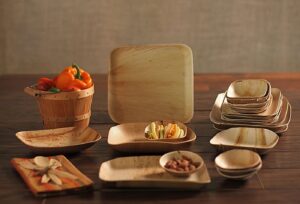
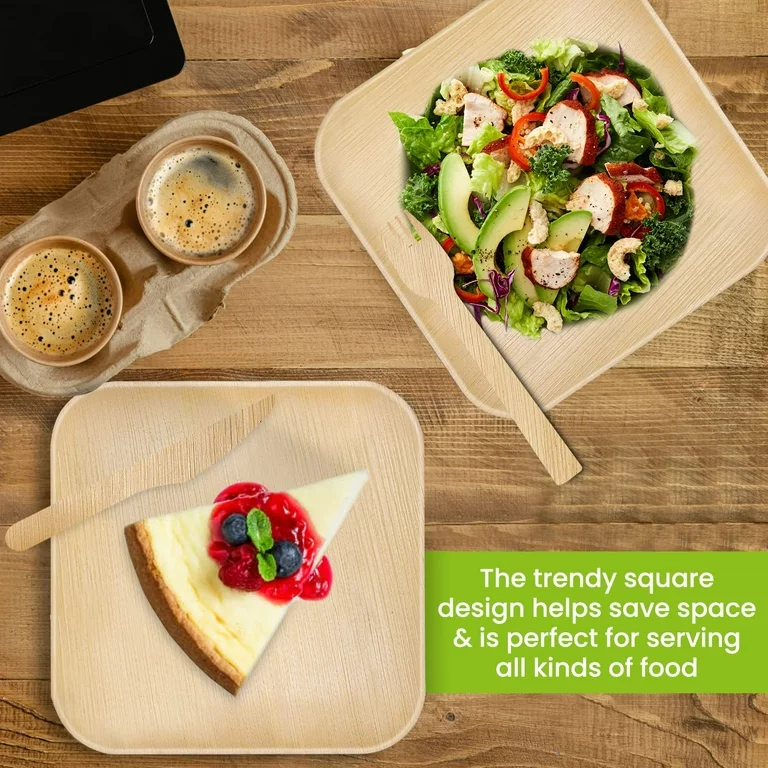
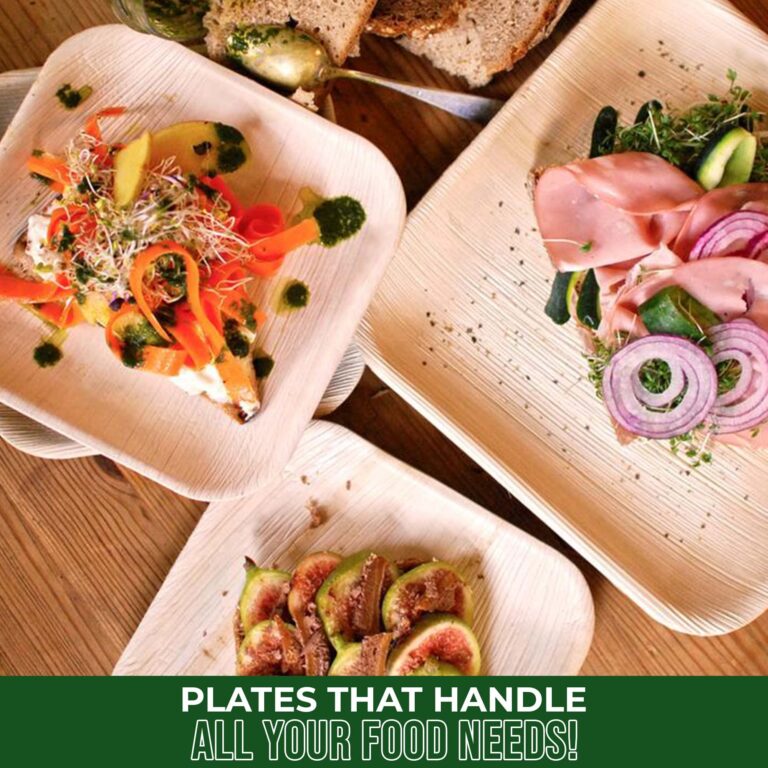
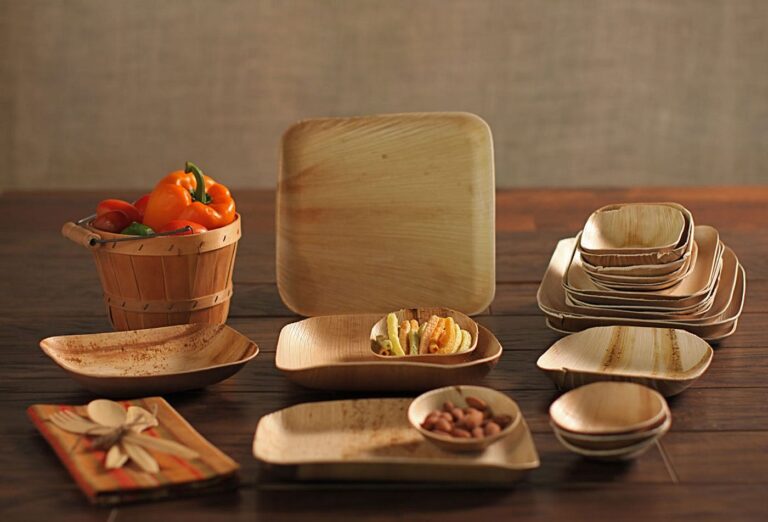
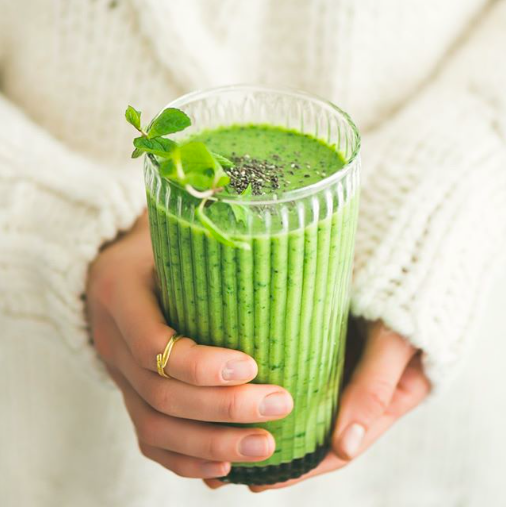





+ There are no comments
Add yours